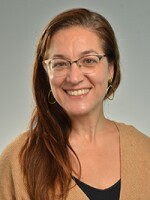Update: Feb. 25.
When Spike Lee's "BlacKkKlansman," a satire about race in America, won an Academy Award Sunday night for best adapted screenplay, one of the Oscars went to Kansas filmmaker Kevin Willmott, who co-write the film with Lee, Charlie Wachtel and David Rabinowitz.
The film, which was up for six Academy Awards, is based on the true story of Ron Stallworth, the first black officer in the Colorado Springs Police Department, who infiltrated the local chapter of the Ku Klux Klan in the 1970s. So viewers might be surprised to learn that one of the most poignant scenes is actually a true story from Willmott's childhood growing up in Junction City, Kansas.
"The book is one thing and the real story is one thing, but a movie is a whole other thing," Wilmott explains. "You gotta make sure you deliver the goods for the movie."
In the movie, Stallworth (John David Washington) is masquerading, by phone, as a white guy who wants to join the KKK. Early on, these scenes are played to comic effect as viewers can see what David Duke (Topher Grace) can't: that the guy spewing white-nationalist rhetoric on the phone is a black man, drawing incredulous stares from his entertained coworkers.
As the film reaches its climax, however, Stallworth struggles with the complicated feelings triggered by the work he's doing, and another phone call plays out differently. Duke has begun to doubt that Stallworth is as racist as he claims to be, so Stallworth offers up a childhood story to prove his credentials. He does so with an intense expression that suggests he's not inventing it this time, that this is a painful memory because he was the black child in the tale, not the white one.
"That's how I wrote it. He's actually talking about himself," Willmott says.
Except that he's actually talking about Willmott.
"I had a white buddy and I went over to his house after school and we were playing and his mother came in and she said, 'Is that nigger here again?' And we just looked at each other and it was this awkward kind of weird thing. And I said, 'I think I better go.'"
He says he felt worse for his friend than he felt for himself.
"I was in like 4th grade, 5th grade. I was starting to come into my blackness. He felt really horrible about it, he was horribly embarrassed. And I kind of used that story, but I flip it in kind of a funky way."

Willmott says this experience is a common one, which is why it works in the movie.
"In my generation, blacks and whites were really for the first time hanging out at each other's homes. Their parents didn't share that experience. Their parents were from another world. And so we were coming into spaces that they were not used to us being in."
In Junction City, Willmott lived in what he calls an "incredibly integrated neighborhood, 'diverse' before the word was even around." He describes it as "black and Japanese, black and German, black and Filipino, black and Korean, black and Italian," due to nearby Kansas army bases, where soldiers returned from tours of duty with spouses from overseas.
"I grew up with all those kids," Willmott says. "It was really great because the thing I learned really was that race mattered in a sense — you need to know who you are — and race doesn't matter at all, because we were all a little bit of everything. So you know, we're all human beings."
Kevin Willmott spoke with KCUR's Central Standard host Gina Kaufmann in August 2018; hear the full conversation here. Follow Kaufmann on Twitter, @GinaKCUR.




